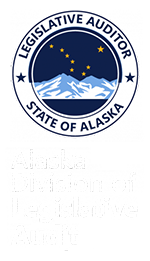Summary: The report includes a number of recommendations that highlight areas in which the department can improve existing services. The department could implement changes that directly improve service. It could also implement internal improvements that, while not as apparent to the outside observer, could have a measurable effect on the department’s ability to provide quality services.]
Click here for the table of all findings for improving service
Click here for the table of all recommendations for improving service
Key Findings for Improving Service
- The department does not provide the full continuum of care required to deliver effective behavioral health services. The most significant gap in the system is the lack of sub-acute services for the adult population.
(Recommendation 2.2.1)
- Access to services increased significantly during the review period, but the growth in service utilization has occurred unequally across regions, and disproportionately in mental health over substance abuse services.
(Recommendation 2.2.3)
Key Recommendations for Improving Service
- The department should build additional service capacity for substance use disorder treatment, both to increase access to services and improve quality.
(Recommendation 2.4.2)
Additional investment in substance use disorder treatment would lead to significant savings in medical, nursing home, and criminal justice costs, producing interventions that “pay for themselves” in cost offsets from other essential State services. Substance use disorder treatment consumers tend to incur excessive or unnecessary medical expenses as a result of seeking medical care driven by other factors that may not require immediate medical attention. The report indicates a “conservative estimate” of 2-to-1 rate of return on investment in the first four years of expanded treatment.
- The department should prioritize services that prevent individuals from over-utilizing medical and emergency services and treat individuals at the lowest level of care needed.
(Recommendation 3.0.2)
(Recommendation 5.5.2)(Recommendation 5.5.3)
(Recommendation 5.5.4)
In Alaska, the average emergency room visits costs between $700 and $3,000, while the daily cost of a prison bed is $158. By contrast, the daily cost to the State of treating an individual in the community is $18. Any program connecting individuals in crisis to community outpatient treatment, when these services are more appropriate than hospitalization or incarceration, makes good economic sense. The report provides a number of options to be proactive in preventing over-utilization of unnecessary services while getting appropriate level of care to individuals in need. These options include Mobile Crisis Units, Targeted Case Management, Crisis Intervention Team training, and Assertive Community Treatment, and Sustained Support of Integrated Care. The combined estimate of savings for these options is upward of $1 million annually.

